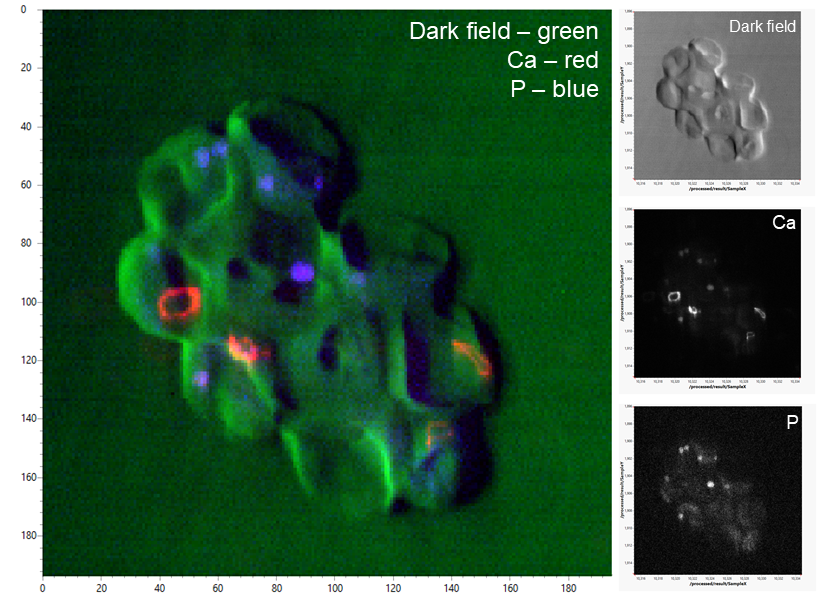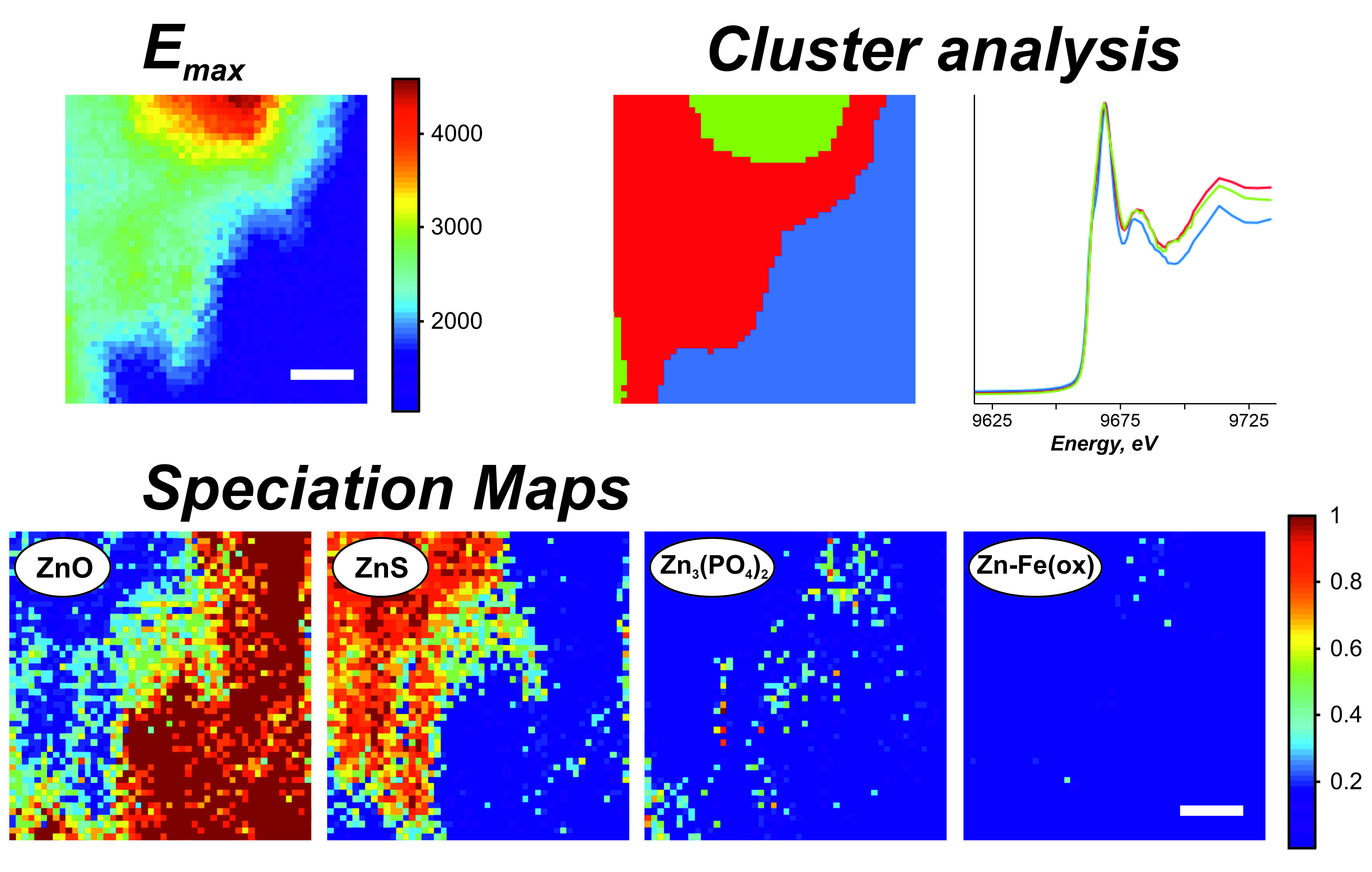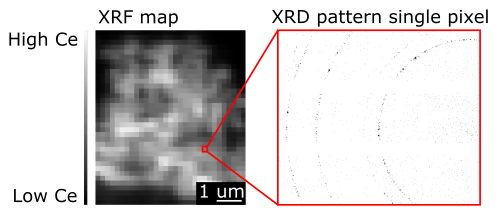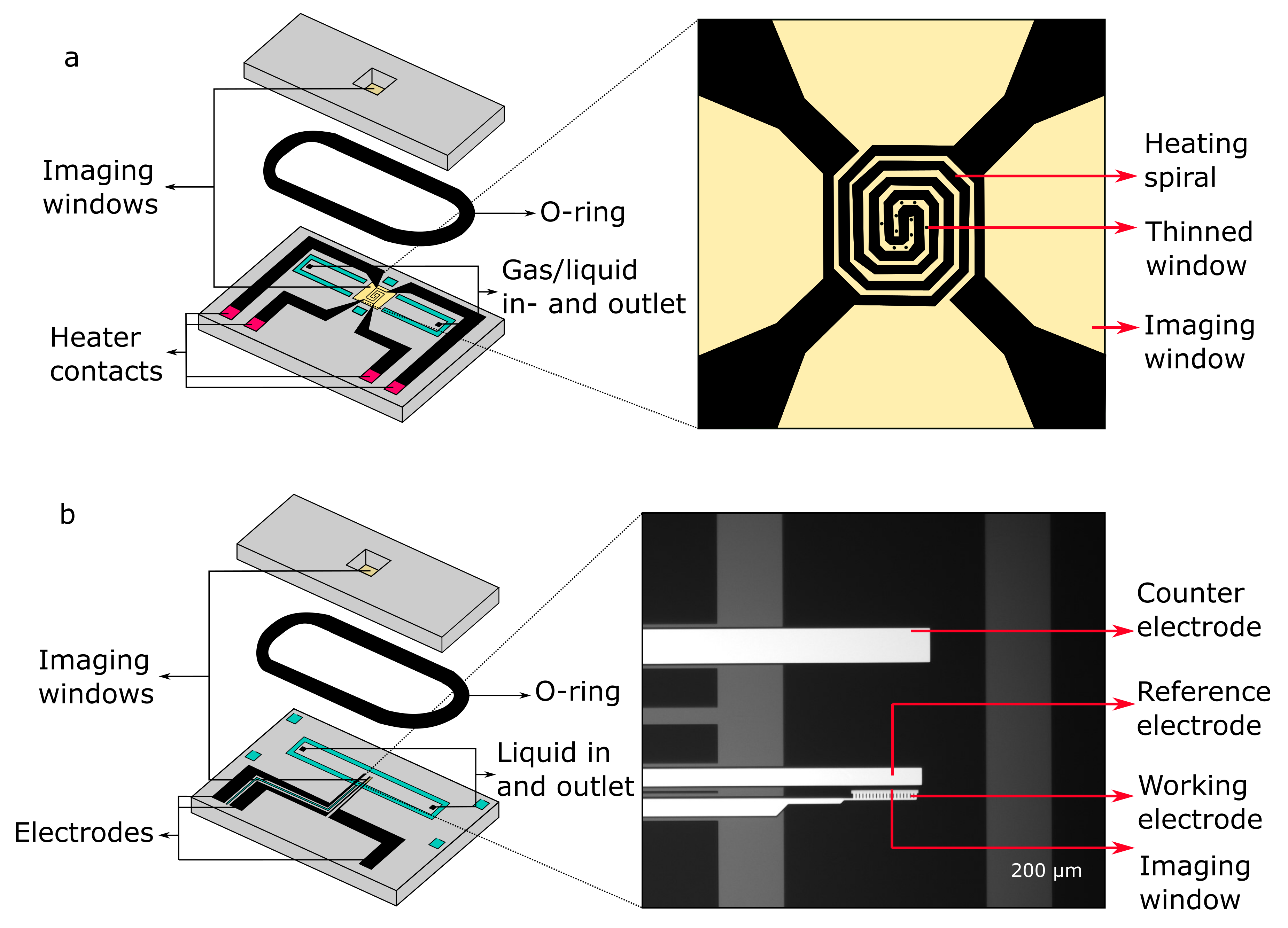I14 Control room:
Tel: +44 (0) 1235 778570
Principal Beamline Scientist:
Julia Parker
E-mail: julia.parker@diamond.ac.uk
Email: chris.nicklin@diamond.ac.uk
Tel: +44 (0)1235 778523
The Hard X-ray nanoprobe beamline is a dedicated facility for nanoscale microscopy and welcomed first users in March 2017. The nanoprobe provides a flexible endstation, with a beam size of 50 nm, optimised for scanning X-ray fluorescence, X-ray spectroscopy and diffraction. To maximise the distance from the focusing optic to the sample, the beamline extends beyond the main building to a distance of approximately 185m, and is housed in an external building alongside the eBIC and ePSIC national electron microscopy facilties.
I14 provides:
For more information on the beamline you can also see the beamline paper: (IUCr) The Hard X-ray Nanoprobe beamline at Diamond Light Source.

2D elemental mapping at 50 nm spatial resolution provides information on the chemical composition and elemental distribution in the sample. Additional information can be obtained by simultaneously acquiring imaging data.

Spatially-resolved X-ray Absorption Near-Edge Structure provides information on the chemical speciation of the element of choice.
Multivariate cluster anaylsis revealing statistically-similar regions acording to their XANES spectra, can be performed by the cross-platform python package - Mantis.
Speciation maps can be calculated through fitting the absorption data from each pixel to the linear combination of the standard spectra, representing the ratio between the expected species (Gomez-Gonzalez et al. 2019 - ACS Nano, 2019, 13, 11049–11061).

X-ray diffraction (XRD) can be used to spatially map changes in crystallographic direction, d-spacing or strain across a sample. A 2D XRD pattern is collected per pixel, in concert with the XRF signal. Processing in 1D or 2D is later achieved through DAWN.
At I14, XRD mapping is available in both wide- and small- angle scattering geometry. The q range available is ~1-3 A for WAXS.

X-ray ptychography imaging, which is a scanning coherent diffractive imaging technique, is now available at i14.
PtyREX, the reconstruction package for electrons and X-rays, was used for the processing and analysis of the ptychographic data. Each channel from the MERLIN detector was processed individually through 100 iterations of ePIE, with position correction and up-sampling.

Our tomography capabilities are currently in development at I14. We can combine any of the techniques available with tomography to map your sample in 3D.
Our most common use case is XRF tomography which allows us to display the elemental composition of a sample in 3D. Using DPC or ptychography, we can generate phase images in 3D giving density information. These techniques can be combined to give elemental analysis in context with lighter elements.

Gas flow: samples can be subjected to a mixture of up to three gasses.
Liquid flow: liquid can be flown into the holder through a syringe pump.
Heating: samples can be heated up to 1100℃.
Biasing: samples can be subjected to electric biasing using a three electrode system attached to a Biologic SP200 potentiostat.
A variation of in situ sample environments are available: any type of Protochips and DENSsolutions liquid chip, DENSsolutions gas chips, K-kit liquid TEM holders.
Read more on the Beamline research projects page In-Situ.
Diamond Light Source is the UK's national synchrotron science facility, located at the Harwell Science and Innovation Campus in Oxfordshire.
Copyright © 2022 Diamond Light Source
Diamond Light Source Ltd
Diamond House
Harwell Science & Innovation Campus
Didcot
Oxfordshire
OX11 0DE
Diamond Light Source® and the Diamond logo are registered trademarks of Diamond Light Source Ltd
Registered in England and Wales at Diamond House, Harwell Science and Innovation Campus, Didcot, Oxfordshire, OX11 0DE, United Kingdom. Company number: 4375679. VAT number: 287 461 957. Economic Operators Registration and Identification (EORI) number: GB287461957003.